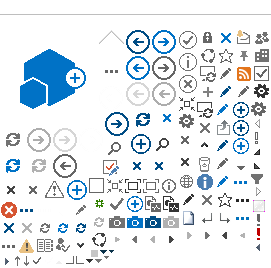The impacts from extreme weather events—made even clearer by Hurricanes Helene and Milton—have led to consumers reevaluating their flood risk.
Recent storms have brought flood insurance into the spotlight, resulting in a 13.1% increase in consumer flood awareness from 2023 to 2024, according to the fifth annual “Neptune Consumer Survey of Flood Awareness" report, conducted in partnership with the University of South Florida St. Petersburg Customer Experience Lab. Additionally, 77% of respondents assessed their flood risk as increasing, compared to 63.9% in 2023.
For many homeowners, purchasing flood insurance has not been front of mind when seeking insurance coverage. However, as the number of extreme weather events in the U.S. has increased in recent decades, it has become evident that the threat from storms and their severity is significant. The impacts of the changing weather patterns—made even clearer by Hurricanes Helene and Milton—have led to a re-evaluation of the risks faced by consumers.
But what can consumers expect to encounter when finding coverage in the flood insurance market? And what opportunities are there for agents to play a guiding role for their clients as they continually assess their flood risk?
“The main trend we are witnessing is growth in the flood insurance market due to the availability of coverage in the private flood space and the National Flood Insurance Program (NFIP)," says Lauren Savage, president, private flood division, Tokio Marine Highland. “Now more than ever, consumers have access to viable markets for flood insurance that provide adequate protection through enhanced coverages and higher limits."
For agents acting in their role as a trusted adviser, “the way flood is being acquired is also changing—it's easier to get quotes through digital channels that provide an ease of doing business," Savage says. “How agents procure coverage is evolving, and it allows for accessibility and increased awareness."
While flood events, amplified by both weather- and human-related factors, impact more communities and properties, demand for coverage is growing slowly. Meanwhile, the opportunities for agents to offer tailored coverage are increasing.
“Every agent can provide flood as an option, but it is only an option," says Nick Orf, area vice president—flood, Risk Placement Services Inc. (RPS). “The NFIP can write almost everywhere, with a few exceptions, and private markets are very similar, providing coverage in almost any area."
“With a few exceptions, flood coverage is pretty much available to anybody that has a desire to obtain it," he adds.
The growth of the private flood insurance market allows agents to offer coverage for many risks that were previously deemed uninsurable risks. This is particularly important because “even just an inch of water in a home can cause significant financial loss, underscoring the importance of purchasing flood insurance, even with a small limit," says Cassie Masone, vice president, flood operations, Selective. “Paying $50,000-$70,000 out-of-pocket to repair flood damage is not feasible for most people."
Nevertheless, while data demonstrates that the number of consumers purchasing flood insurance is increasing, only 4% of homeowners are insured for flood, according to FEMA.
“People who haven't purchased coverage in the past aren't as ready to jump into purchasing coverage," Orf says. “And there's still that hurdle when people are in a low-risk flood zone, like a Zone X, or they're not required to have flood insurance by a lender or a mortgage company, they're not as willing to purchase coverage."
However, the general awareness surrounding flood insurance is increasing because of extreme weather events, media reporting and agents' and carriers' promotion of the need for coverage.
“It's important to dispel the myth that flooding is just a coastal issue," Masone adds. “While flooding often occurs due to hurricanes or coastal storms, the worst flooding frequently happens inland, where people do not expect it and are unprepared."
Olivia Overman is IA content editor.
